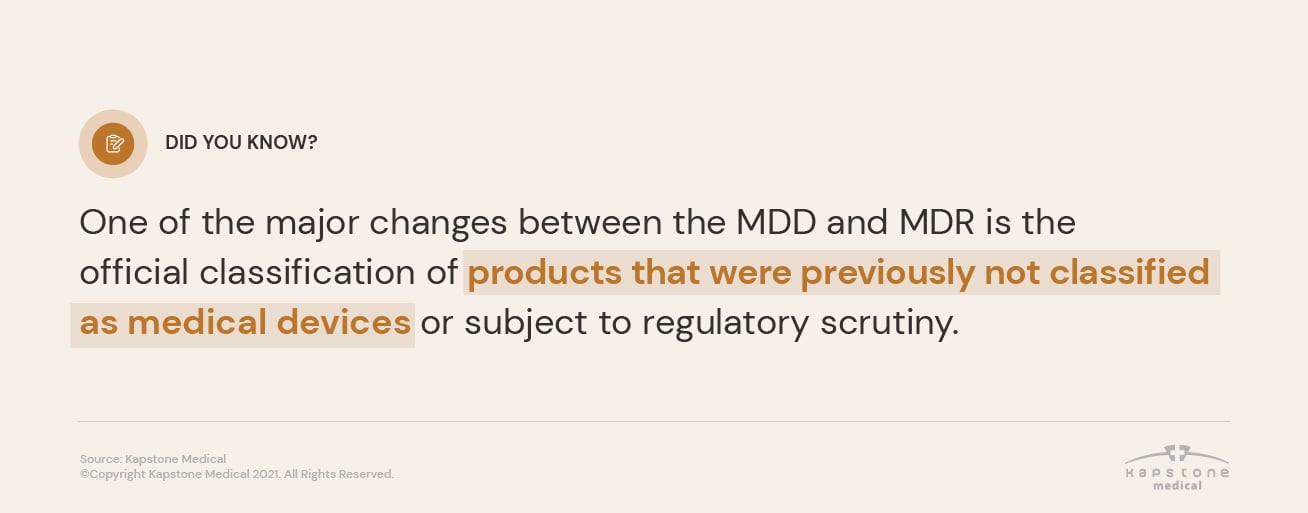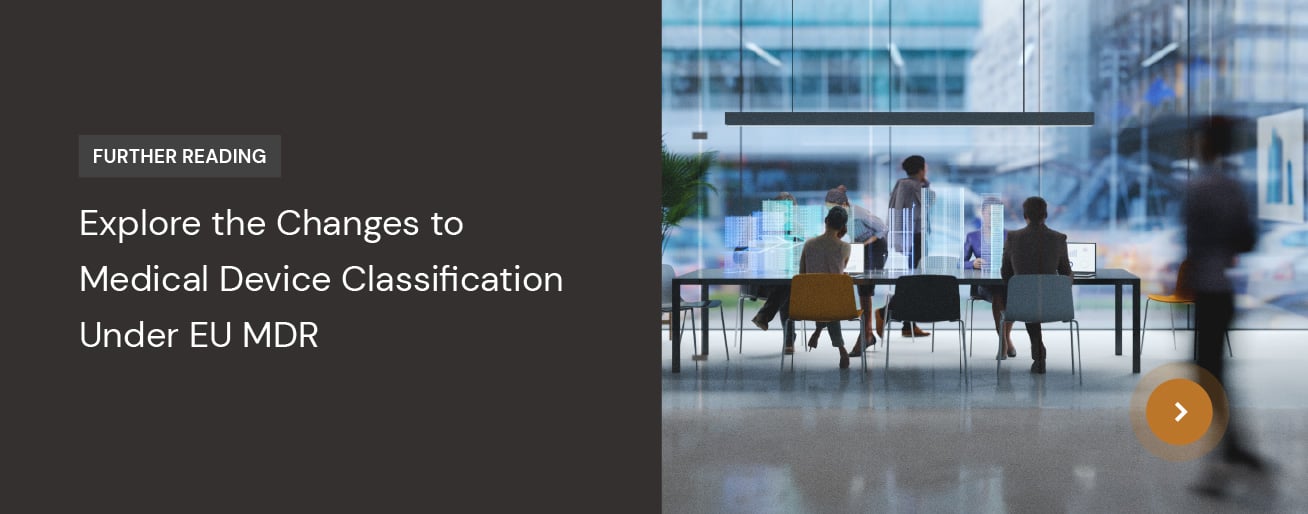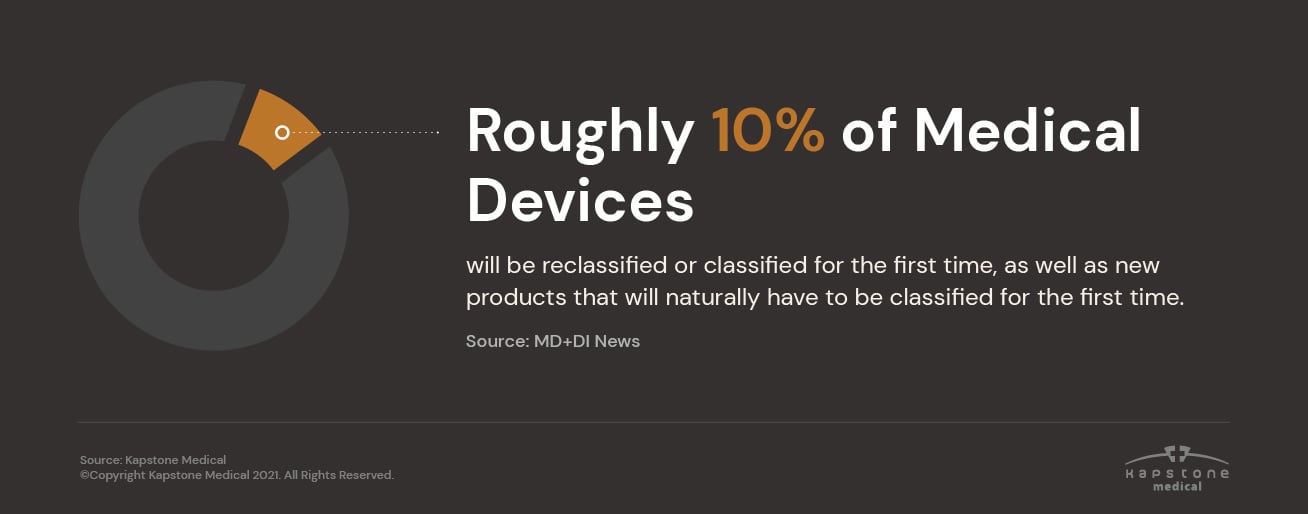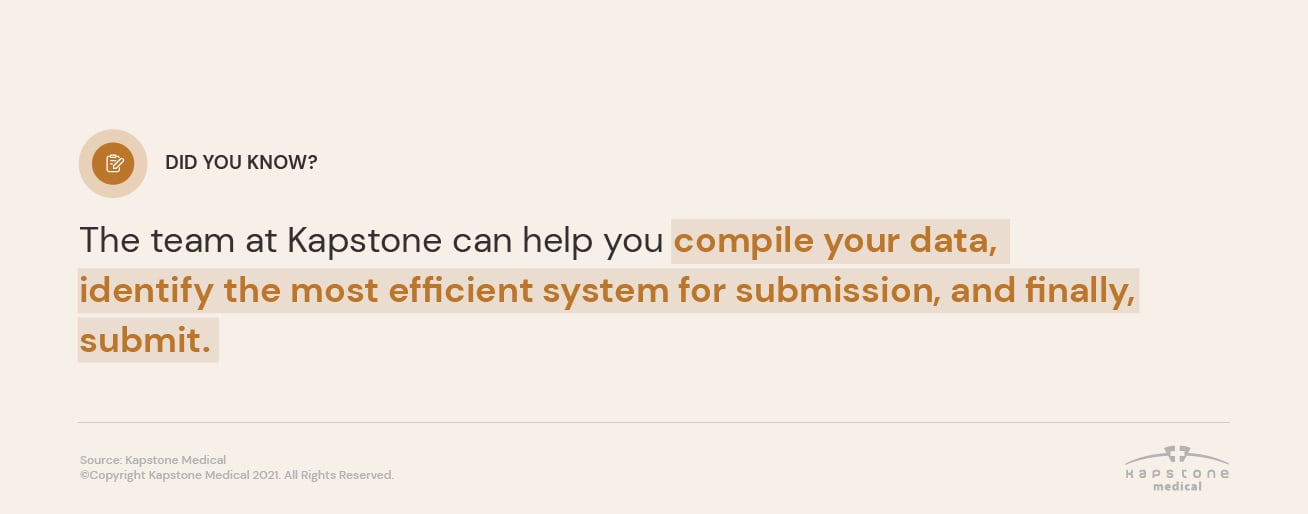New Device Regulations Under MDR Annex XVI
Starting on May 26, 2021, medical device companies hoping to commercialize new products in the European Union will have to comply with the updated Medical Device Regulation (MDR).*
The MDR takes a more conservative approach to medical device safety. This is in response to increased public interest and pressure surrounding safety and efficacy, particularly in regard to long-term use. Thanks to global innovation in healthcare, sanitation, and more, people are living longer—and relying on medicines and medical devices more and for longer periods of time.
To that end, one of the major changes between the MDD and MDR is the official classification of products without an intended medical purpose. These products were previously not classified as medical devices or subject to regulatory scrutiny.
 In this blog, we’ll help you understand:
In this blog, we’ll help you understand:
- The new classification of products without an intended medical purpose as outlined in MDR Annex XVI
- The 8 required steps to compliance for medical devices that are now subject to regulation under Annex XVI
Products Without an Intended Medical Purpose
The EU MDR introduces a new device classification: products with an aesthetic or non-medical purpose that are nevertheless similar to medical devices in terms of function or risk profile. These products, which will now be subject to regulation under Annex XVI of the MDR, include:
- Contact lenses or other items intended to be introduced into or onto the eye
- Products intended to be totally or partially introduced into the human body through surgically invasive means for the purpose of modifying the anatomy or fixation of body parts (with the exception of tattooing products and piercings)
- Substances, combinations of substances, or items intended to be used for facial or other dermal or mucous membrane filling by subcutaneous, submucous, or intradermal injection or other introduction (excluding those for tattooing)
- Equipment intended to be used to reduce, remove, or destroy adipose tissue, such as equipment for liposuction, lipolysis, or lipoplasty
- High intensity electromagnetic radiation (e.g. infra-red, visible light and ultra-violet) emitting equipment intended for use on the human body, including coherent and non-coherent sources, monochromatic and broad spectrum, such as lasers and intense pulsed light equipment, for skin resurfacing, tattoo or hair removal or other skin treatment
- Equipment intended for brain stimulation that apply electrical currents or magnetic or electromagnetic fields that penetrate the cranium to modify neuronal activity in the brain
Step 1: Determine Your Medical Device Classification Under MDR
The first step towards compliance is determining your medical device classification under MDR. Each device classification is subject to different regulatory guidance.
Though this process may seem complicated, it ultimately involves only four steps:
- Understand whether your device is invasive, non-invasive, or active
- Understand your device’s duration of use
- Classify your device according to the four-class system that governs all medical devices under MDR
- Review each of the 22 rules in Annex VII to determine which one applies to your device
 Check out this blog post for more in-depth guidance through these steps and more information about the MDR.
Check out this blog post for more in-depth guidance through these steps and more information about the MDR.
Step 2: Get expert consultation to ensure your device complies with EU MDR
MD+DI News estimates that roughly 90% of medical devices will stay in the same classification under MDR. However, that leaves 10% of products that will be reclassified or classified for the first time, as well as new products that will naturally have to be classified for the first time.
If you think your business may be impacted by changes to MDR, our expert consultants are here to help you understand the new regulations and minimize disruptions. Learn about our regulatory affairs services here or get in touch here. Step 3: Pass a Conformity Assessment by a Notified Body
Step 3: Pass a Conformity Assessment by a Notified Body
Once you’ve determined your device classification and made any necessary changes to your manufacturing, testing, and/or commercialization processes, your company will have to pass a conformity assessment. Medical device manufacturers can sometimes perform this assessment themselves, but in other cases, an EU Notified Body will need to be involved (depending on device classification).
What is an EU Notified Body?
A Notified Body is an independent certification organization that is “notified” by an EU member state’s Competent Authority, usually the ministry of health, to certify that a product meets the applicable requirements for CE marking. The Notified Body’s primary task is to provide conformity assessment services according to the relevant regulatory standards.
You can access a complete list of EU notified bodies here. For more information about these regulatory players and whether they will need to be involved in your conformity assessment, check out this blog post.
What is a Conformity Assessment?
A conformity assessment is just what it sounds like: an official check to ensure that a medical device conforms to all relevant legislative standards before it goes on the EU market.
Each MDR device classification is subject to different conformity testing procedures. The MDR also specifies whether manufacturers can perform the conformity assessment themselves or will need to involve an EU Notified Body. The team at Kapstone can help you identify the right path forward based on your device classification.
Step 4: Declaration of Conformity and CE Mark Placement
The final step in the conformity assessment is a declaration of conformity (DoC). Medical device manufacturers are responsible for drawing up this declaration, which should include all information to identify:
- The device
- The legislation according to which it is issued
- The manufacturer or authorized representative
- The Notified Body (if applicable)
- References to harmonized standards or other normative documents (if applicable)
What is a CE Mark?
A CE Mark symbol certifies that a product meets high environmental, safety, and health protection requirements, if requirements exist for that product category. Medical devices are subject to stringent directives and therefore cannot be sold in the EU without a CE Mark.
How do you obtain a CE mark?
Medical device manufacturers must determine if their product meets the standards for a CE Mark. There is no official confirmation or licensing other than a completed conformity assessment, which may or may not involve signoff from a Notified Body.
Click here for more information about the CE mark and how to display it on your product.
Step 5: Assign a Basic Unique Device Identifier(UDI)
Next on the list of MDR compliance action items: assign a basic unique device Identifier, or UDI for short. The European Union established the UDI system to ensure that approved medical devices are unambiguously traceable, their technical documentation is on-record, and that post-market surveillance can be performed against a centralized database.
What is a UDI
A UDI has two components:
- UDI device identifier (‘UDI-DI’) specific to a device, providing access to the information laid down in Part B of MDR Annex VI
- UDI production identifier (‘UDI-PI’) that identifies the unit of device production and, if applicable, the packaged devices as specified in Part C of MDR Annex VI
For more information, including how Kapstone can help you assign your UDI, click here.
Step 6: Submit Information to Eudamed
Under the new MDR, the European Commission recognized that to fully support the more stringent requirements for filing, reporting, and continuing surveillance, it would need to greatly expand the capabilities of the database for monitoring and data collection.
The redesigned system, known as Eudamed, will consist of seven databases that track:
- Economic operators
- Devices
- Unique Device Identification (UDI)
- CE marking
- Quality Certifications
- Clinical and performance studies
- Vigilance data and market surveillance

Device manufacturers are responsible for providing this data. It can be provided manually, via XML upload, or via machine-to-machine (M2M) exchange. The team at Kapstone can help you compile your data, identify the most efficient system for submission, and finally, submit.
Manufacturer Obligations
Manufacturers of MDR Annex XVI products will need to meet a number of other obligations. These include, but are not limited to, ensuring that:
- The device has been correctly classified against the new risk classification criteria (MDR Annex VIII)
- A person responsible for regulatory compliance is in place (MDR Article 15)
- Distributors and importers in the supply chain are compliant
- Sufficient financial coverage is in place, in respect of a manufacturer’s potential liability (MDR Article 10)
- The new vigilance reporting timescales are met and an annual period
More information on these obligations and how your organization can meet them is available here. As always, the team at Kapstone can provide additional guidance.
Step 7: Place the device on the market
A product is placed on the market when it is made available for the first time on the European market. This applies to every individual product, not a group of products, and only to finished medical devices or accessories. Placing on the market can only be performed by a manufacturer or importer.
Step 8: Meet Post-Market Surveillance Requirements
The MDR builds on the framework of the MDD with an increased emphasis on post-market surveillance (PMS) and post-market clinical follow-up (PMCF), similar to FDA’s approach for high risk devices. The MDR specifically dictates that medical device manufacturers should not passively wait for information to come to them. Instead, they should actively seek out and review information.
Your company will be subject to different post-market surveillance requirements depending on your device’s risk classification. More information is available here.



